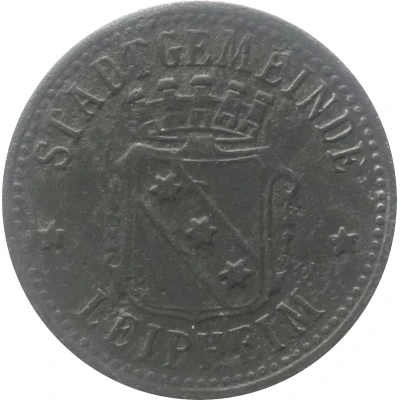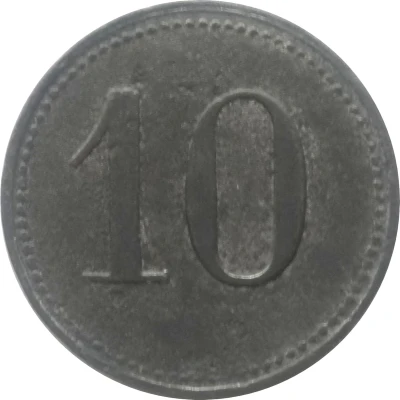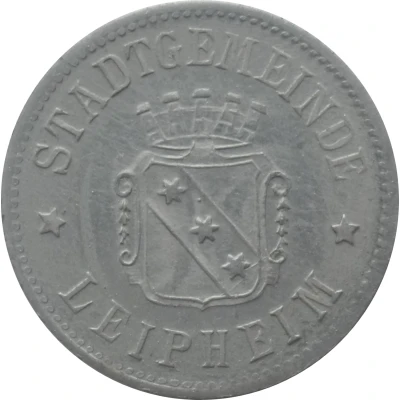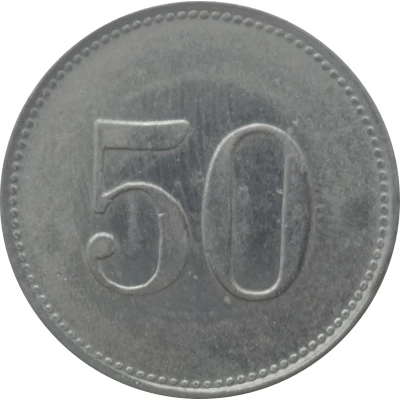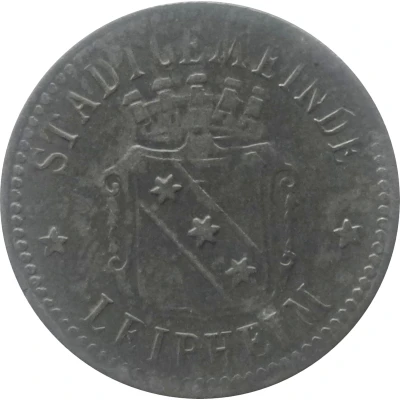
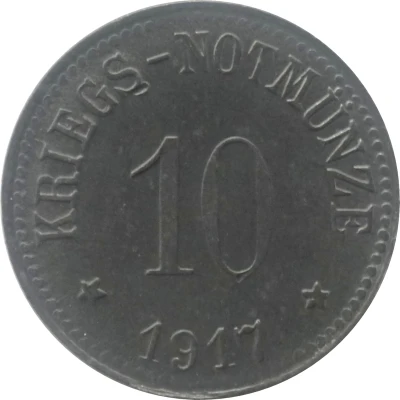

© Willem63 (CC BY-NC-SA)
10 Pfennigs - Leipheim
1917 year| Zinc | 1.8 g | 20.0 mm |
| Issuer | City of Leipheim (Federal state of Bavaria) |
|---|---|
| Emperor | William II (Wilhelm II) (1888-1918) |
| Type | Standard circulation coin |
| Year | 1917 |
| Value | 10 Pfennigs (10 Pfennige) (0.10) |
| Currency | Mark (1914-1924) |
| Composition | Zinc |
| Weight | 1.8 g |
| Diameter | 20.0 mm |
| Thickness | 1.0 mm |
| Shape | Round |
| Technique | Milled |
| Orientation | Medal alignment ↑↑ |
| Demonetized | Yes |
| Updated | 2024-10-04 |
| Numista | N#145593 |
|---|---|
| Rarity index | 88% |
Reverse
Pearl rim, legend surrounding denomination.
Script: Latin
Lettering:
KRIEGS-NOTMÜNZE
10
★ 1917 ★
Edge
Plain
Comment
Issuing body: [Stadt, Bayern].Interesting fact
The 10 Pfennigs - Leipheim 1917 coin was minted during a time of economic turmoil in Germany, known as the "Inflationary Period" (1914-1923). During this time, the value of the German mark (the national currency) plummeted, and prices for everyday goods skyrocketed. As a result, many Germans turned to alternative forms of currency, such as local coins like the 10 Pfennigs - Leipheim 1917, which were issued by cities and towns across the country. These local coins were often made of cheaper materials, like zinc, and had lower denominations than the official German currency, making them more accessible to the general population. Despite their humble origins, coins like the 10 Pfennigs - Leipheim 1917 have become sought-after collectibles among numismatists today.
